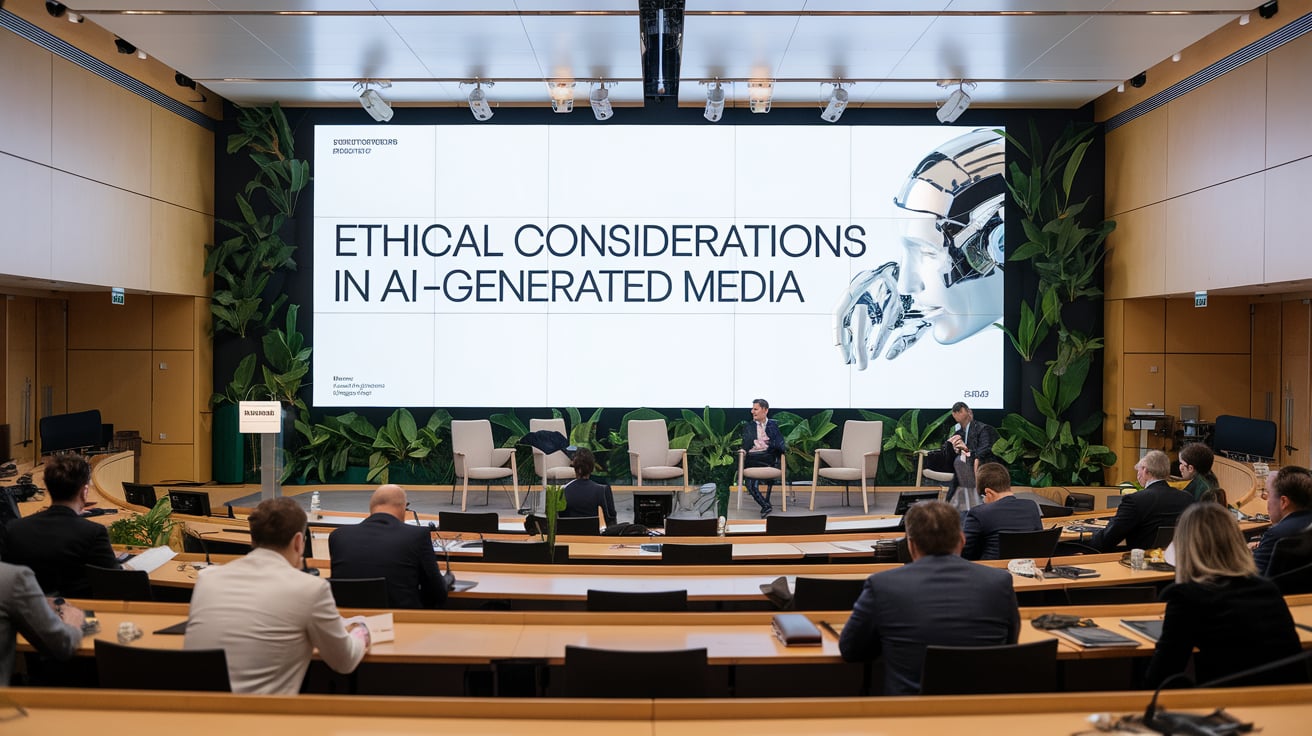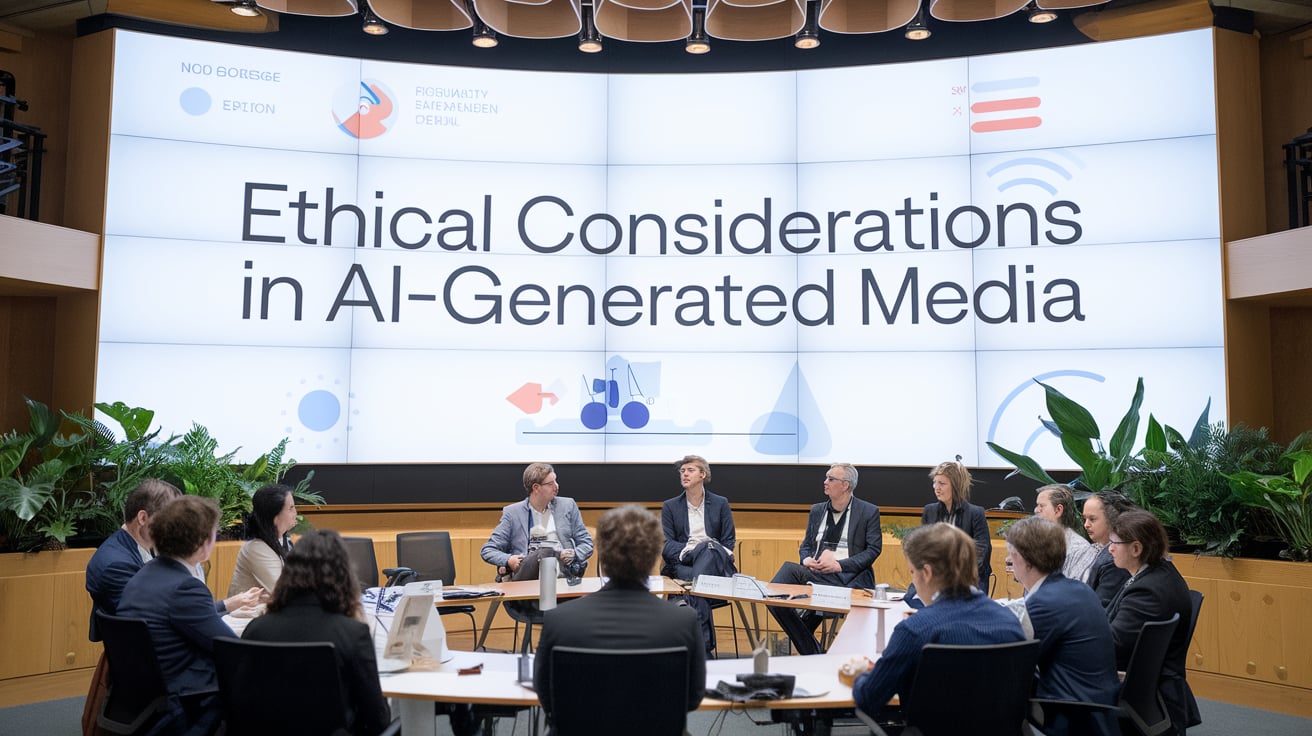As artificial intelligence (AI) continues to revolutionize industries, its impact on media creation has been nothing short of transformative. From AI-generated articles and deepfake videos to synthetic voices and virtual influencers, the possibilities seem endless. However, with great power comes great responsibility. The rise of AI-generated media has sparked a critical conversation about ethics, accountability, and the potential consequences of this rapidly evolving technology. This article delves into the ethical considerations surrounding AI-generated media, exploring the challenges and opportunities it presents.
The Rise of AI-Generated Media
AI-generated media refers to content created or manipulated using artificial intelligence technologies. This includes text, images, audio, and video produced by algorithms without direct human input. Tools like OpenAI’s GPT models, DALL·E, and deepfake software have made it easier than ever to generate realistic and compelling content. While these advancements offer exciting opportunities for creativity and efficiency, they also raise significant ethical concerns.
One of the most prominent examples of AI-generated media is deepfake technology, which can create hyper-realistic videos of people saying or doing things they never actually did. While deepfakes have legitimate uses in entertainment and education, they also pose serious risks, such as spreading misinformation, manipulating public opinion, and violating individuals’ privacy.
Ethical Challenges in AI-Generated Media

1. Misinformation and Fake News
The ability of AI to generate convincing fake content has profound implications for the spread of misinformation. Deepfake videos, for instance, can be used to create false narratives, damage reputations, or even influence elections. The ease with which AI can produce such content makes it difficult for the average person to distinguish between what is real and what is fabricated.
A notable example is the 2020 deepfake video of former U.S. President Barack Obama, which was created to demonstrate the potential dangers of the technology. While this particular video was a public service announcement, it highlighted how easily AI-generated media could be weaponized for malicious purposes.
2. Privacy Violations
AI-generated media often relies on vast amounts of data, including personal information, to create realistic outputs. This raises concerns about privacy and consent. For example, deepfake technology can use images or videos of individuals without their permission, leading to potential exploitation or harm.
In 2019, a report by Sensity AI (now DeepTrace) revealed that 96% of deepfake videos online were non-consensual pornography, disproportionately targeting women. This alarming statistic underscores the need for stricter regulations and ethical guidelines to protect individuals’ rights.
3. Bias and Discrimination
AI systems are only as unbiased as the data they are trained on. If the training data contains biases, the AI-generated content will likely reflect those biases. This can perpetuate harmful stereotypes and reinforce existing inequalities.
For instance, AI-generated text or images may inadvertently promote racial, gender, or cultural biases, leading to discriminatory outcomes. Addressing this issue requires a commitment to diverse and representative data sets, as well as ongoing monitoring and evaluation of AI systems.
4. Intellectual Property Concerns
The use of AI to create media also raises questions about intellectual property (IP) rights. Who owns the content generated by an AI system—the developer, the user, or the AI itself? This issue becomes even more complex when AI-generated content is based on existing works, potentially infringing on copyright laws.
In 2022, the U.S. Copyright Office ruled that AI-generated art could not be copyrighted, as it lacked human authorship. This decision highlights the legal and ethical gray areas surrounding AI-generated media and the need for clearer guidelines.
Opportunities for Ethical AI-Generated Media

While the ethical challenges are significant, AI-generated media also offers opportunities for positive impact. For example, AI can be used to create educational content, assist in creative processes, and enhance accessibility for individuals with disabilities. The key lies in developing and deploying AI technologies responsibly, with a focus on transparency, accountability, and inclusivity.
1. Transparency and Disclosure
One way to address ethical concerns is by ensuring transparency in AI-generated media. Content creators should clearly disclose when AI has been used to produce or alter media. This allows consumers to make informed decisions and fosters trust in the technology.
For example, news organizations could use AI to generate summaries or reports, but they should clearly label such content as AI-generated. This approach maintains journalistic integrity while leveraging the efficiency of AI.
2. Regulation and Accountability
Governments and industry leaders must work together to establish regulations that govern the use of AI-generated media. These regulations should address issues such as privacy, consent, and intellectual property, while also holding bad actors accountable.
The European Union’s Artificial Intelligence Act is a step in the right direction, proposing strict rules for high-risk AI applications, including those used in media. Such frameworks can help mitigate the risks associated with AI-generated content.
3. Ethical AI Development
Developers and researchers have a responsibility to prioritize ethics in AI development. This includes using diverse and unbiased data sets, implementing safeguards against misuse, and engaging with stakeholders to understand the potential impact of their technologies.
Organizations like the Partnership on AI are leading efforts to promote ethical AI practices, bringing together industry, academia, and civil society to address the challenges and opportunities of AI.
The Role of Consumers
Consumers also play a crucial role in shaping the future of AI-generated media. By staying informed and critically evaluating the content they encounter, individuals can help combat misinformation and hold content creators accountable. Media literacy education is essential to empower people to navigate the complexities of AI-generated content.
Conclusion
AI-generated media represents a double-edged sword, offering both incredible potential and significant ethical challenges. As the technology continues to evolve, it is imperative that we address these challenges head-on, ensuring that AI is used responsibly and ethically. By fostering transparency, implementing robust regulations, and prioritizing ethical development, we can harness the power of AI-generated media for the greater good.
The conversation around ethical considerations in AI-generated media is just beginning. As stakeholders across industries grapple with these issues, one thing is clear: the decisions we make today will shape the future of media and society as a whole.
For further reading on the ethical implications of AI, visit Brookings Institution’s report on AI ethics.



